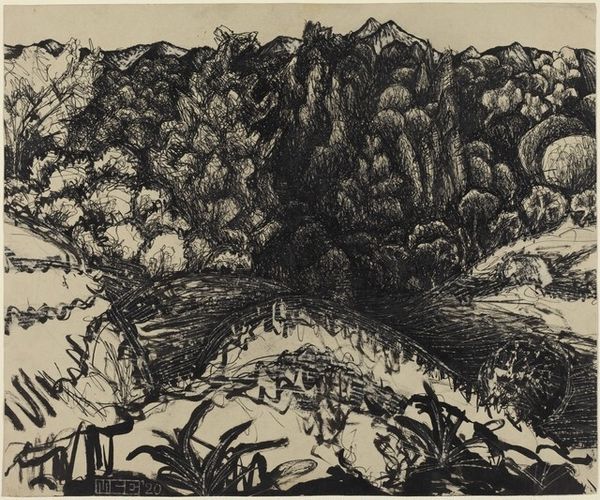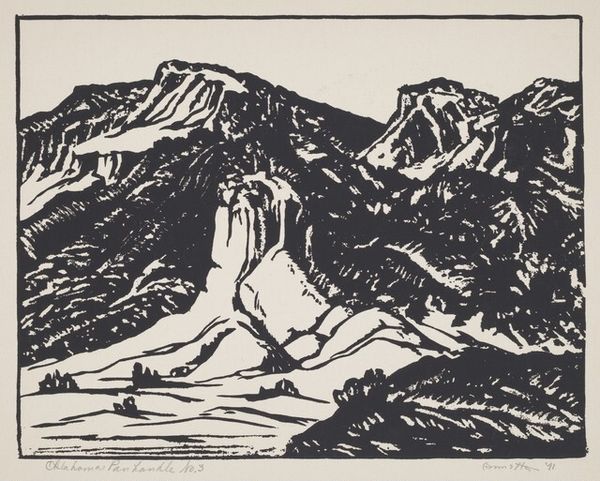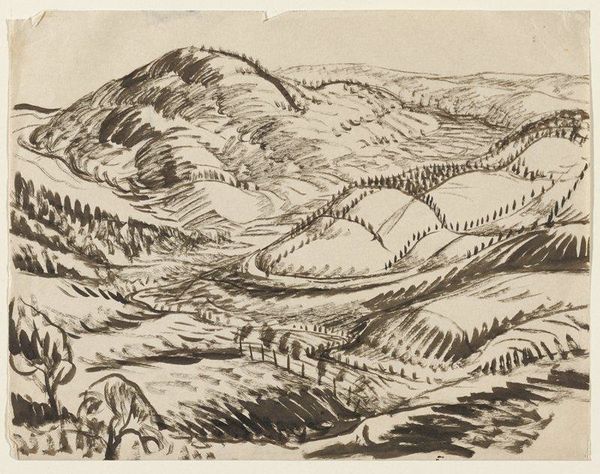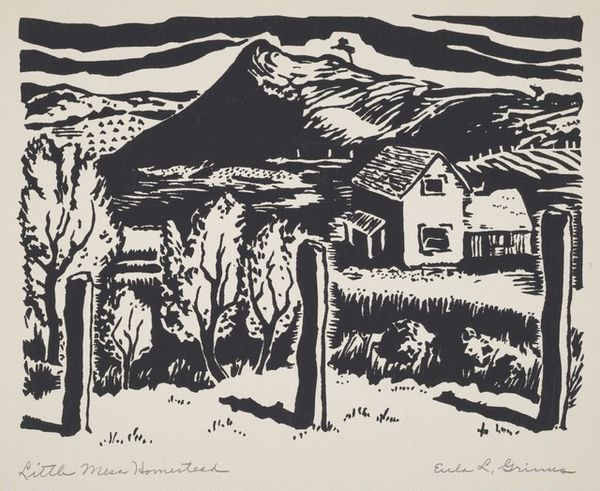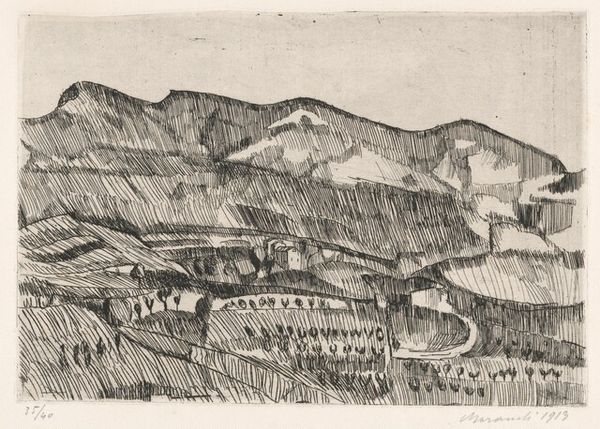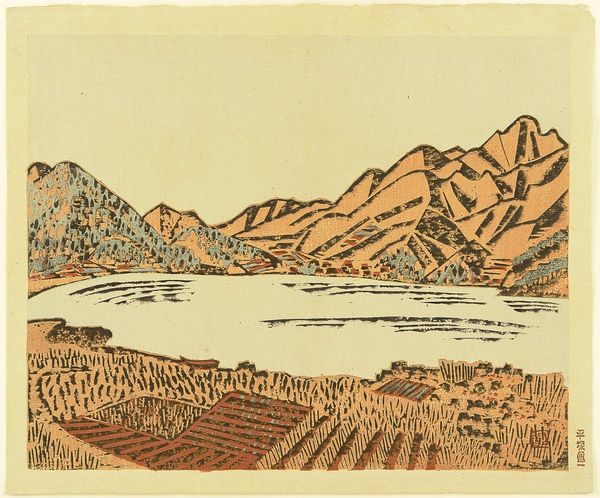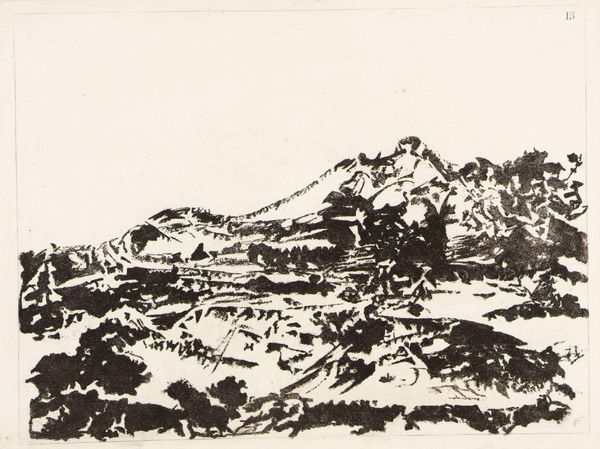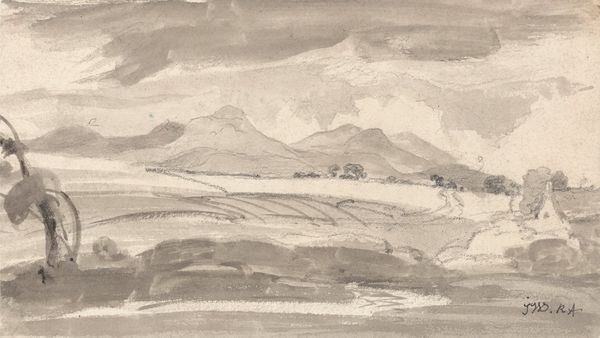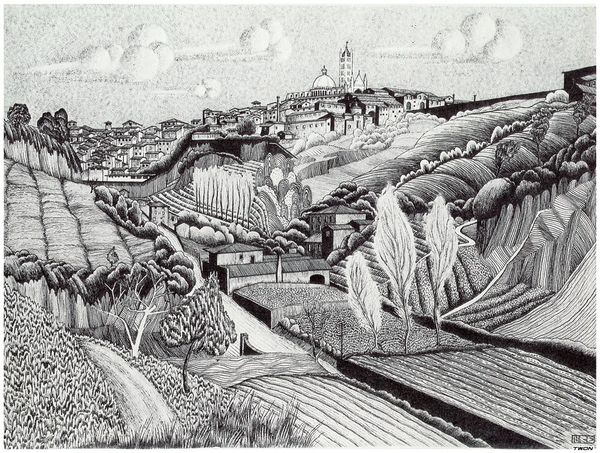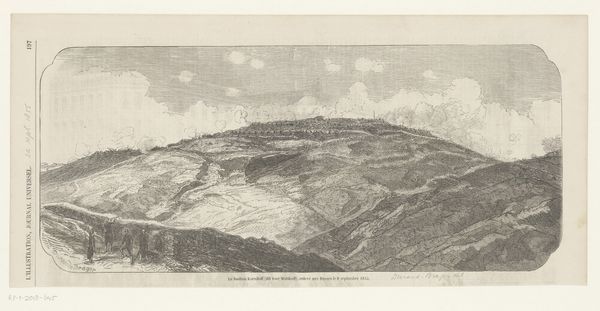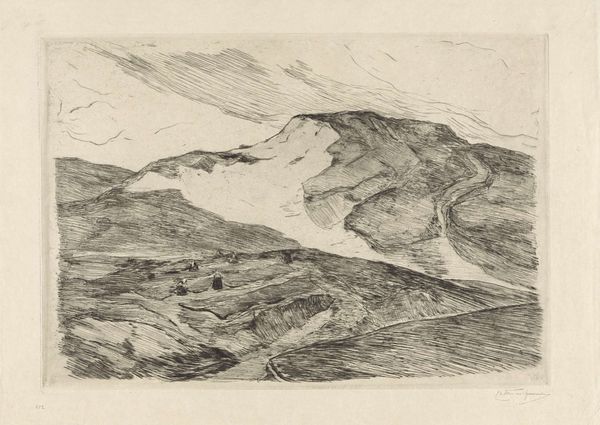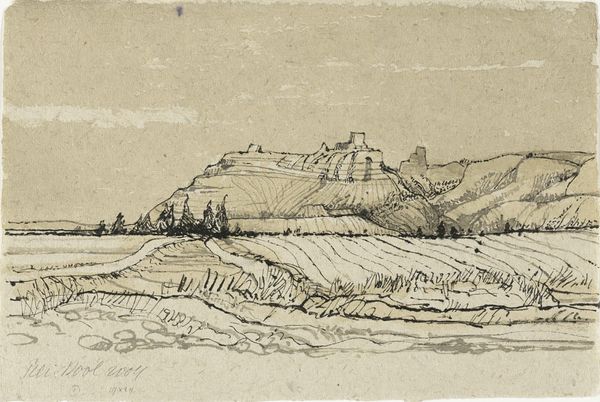
drawing, ink, woodcut
#
drawing
#
ink drawing
#
landscape
#
ink
#
linocut print
#
woodcut
Dimensions: image: 184 x 235 mm paper: 279 x 330 mm
Copyright: National Gallery of Art: CC0 1.0
Curator: Let's take a look at "Arbuckle Hills," a woodcut print created in 1941 by Ira Eppler. It depicts a landscape in stark black and white. Editor: My first impression is that it has an almost musical rhythm to it. The darks and lights are very graphic, almost like looking at soundwaves made visible. A peaceful stillness with a sense of dramatic potential, if that makes sense? Curator: It does, and that’s interesting considering the historical context. 1941... right on the cusp of World War II, when everything felt heavy and uncertain, especially regarding America’s role. This scene presents such stark pastoral beauty. Eppler created this print as part of a larger effort within artistic circles to focus on regional and American subject matter, as opposed to what they saw as the decadence of European art. It's part of a visual quest for an American identity, almost defiant, against what was happening overseas. Editor: It does feel defiant now that you mention it. And the starkness lends to that seriousness. Even the way the sky is rendered – heavy horizontal lines – feels almost ominous. It feels almost like folk art to me, especially considering its scale and rendering, though its execution feels a bit academic and removed. I'm struck by the graphic weight, which makes the image feel heavy, solid. Curator: It reflects a populist movement that rejected elitism, promoting accessibility through printmaking. And it connects to ideas surrounding the Depression-era's WPA Federal Art Project that supported artists and encouraged this celebration of regionalist imagery and rural life, which, from today's perspective, tends to skew nostalgic in its narrative. Editor: It is that nostalgia that feels fraught when placed in 1941. This scene is on the edge of something—like looking out onto the calm before a storm. It’s simple, strong, and rooted in a very specific moment, a pre-war American identity that maybe felt very fleeting, even as he rendered it. What a fascinating and strange time capsule. Curator: Absolutely. These historical and socio-political forces shape the way art is received. We now look back and can understand so much more about Eppler's work, placing "Arbuckle Hills" as part of an important American visual archive. Editor: Precisely! And understanding that background makes it so much more potent today. Thanks!
Comments
No comments
Be the first to comment and join the conversation on the ultimate creative platform.
